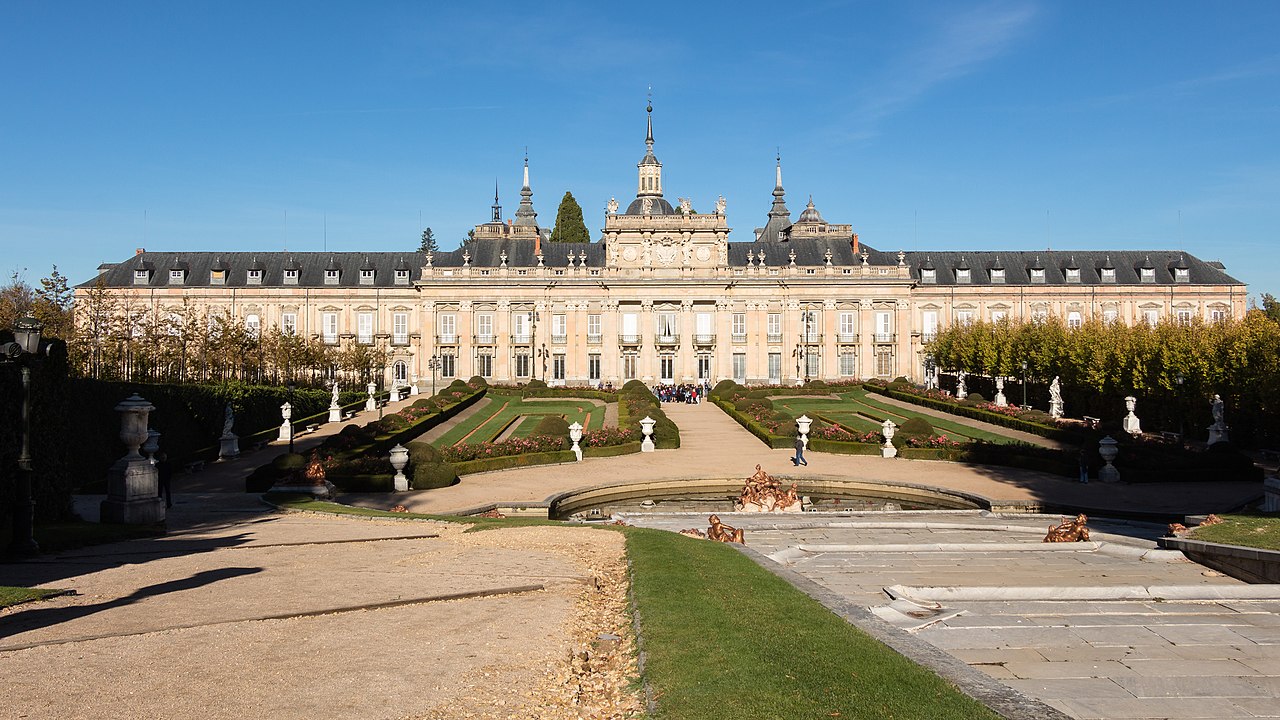
El Royal Palace of La Granja de San Ildefonso It was the result of the king's fascination Philip V for that area of the current province of Segovia. Thanks to it, we can enjoy this monumental wonder that seems to transport us to the very Versailles or to other noble constructions of that time.
Specifically, the Royal Palace of La Granja de San Ildefonso is located on the northern slope of the Sierra de Guadarrama, barely thirteen kilometers from the city of Segovia already about eighty of the Madrid. So that you visit it knowing what to look for, we explain all the details about this palace. But first, let's do a little history.
La Granja Palace: a bit of history
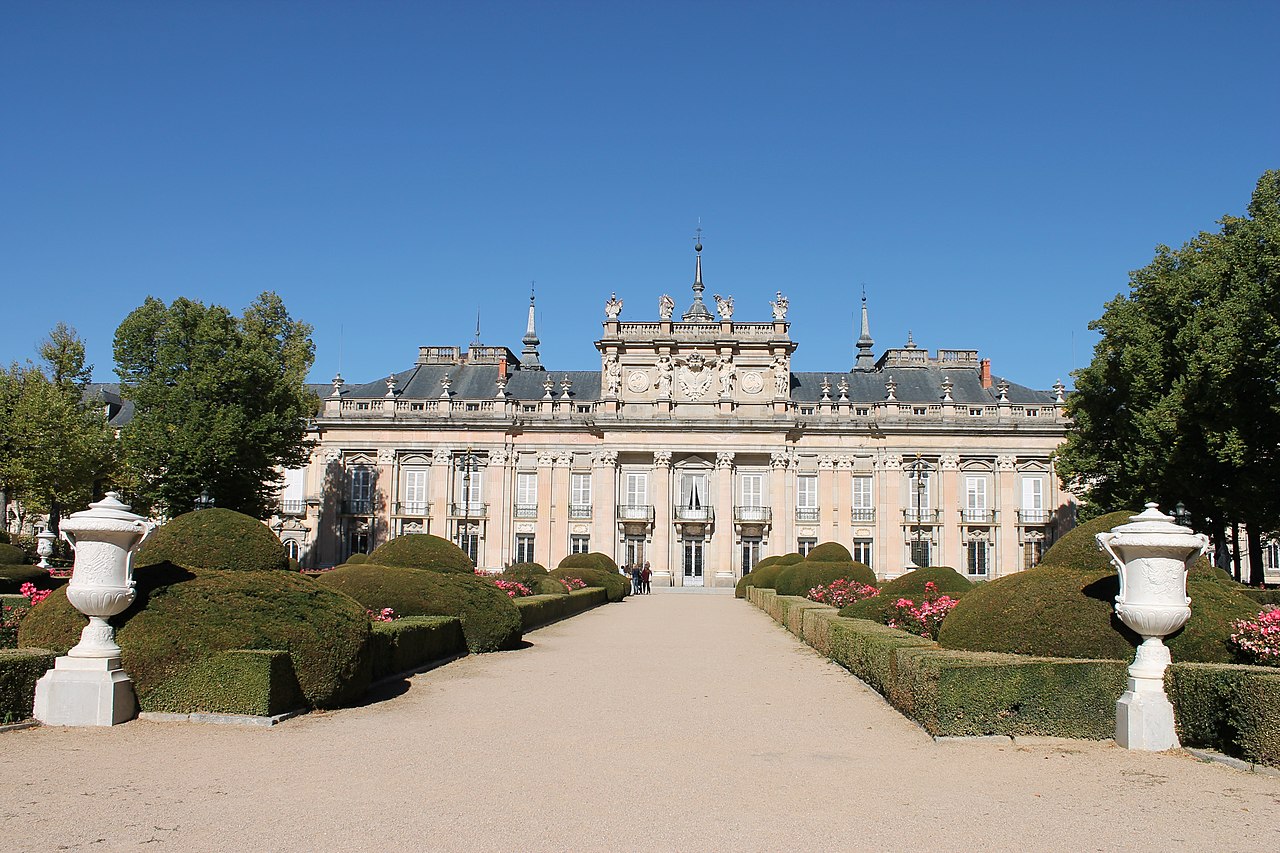
Royal Palace of La Granja de San Ildefonso
The northern slope of the Sierra de Guadarrama it had been a hunting ground for the Spanish monarchy since ancient times. When Philip V He arrived from France as the first king of the Bourbon House, this great fan of hunting activities was fascinated by the mountains of the area.
For this reason, he ordered the purchase of some land owned by the Hieronymite monks of the parral monastery to build a palace. The work was entrusted to the architect Theodore Ardemans, who was master of the Royal Palace and of the Villa de Madrid. In 1721 the works began, for which they also had the quantity surveyor Juan Roman.
At the same time, the creation of the wonderful palace gardens began. In this case, the person in charge of the project was the Frenchman Rene Carlier, who had already been in charge of the Palace of the Good Retreat. This one collaborated with the gardener Etienne Boutelou and with the engineer Etienne Marchand, who was in charge of directing the works. Likewise, several sculptors were in charge of making the monumental fountains of this green space, which we will talk about later. Among them, René Fremin, Hubert Demandre, John Thierry y Pedro Pitue.
Barely three years later, both the palace and the gardens were more or less finished. However, on the king's death in 1746, his wife, Elizabeth of Farnese, he retired to San Ildefonso and ordered the expansion of the facilities. Several architects worked on the site under the supervision of andrea procaccini. Mainly, Philip Juvarra created a new façade in the central part of the garden.
The Royal Palace of La Granja de San Ildefonso: external appearance
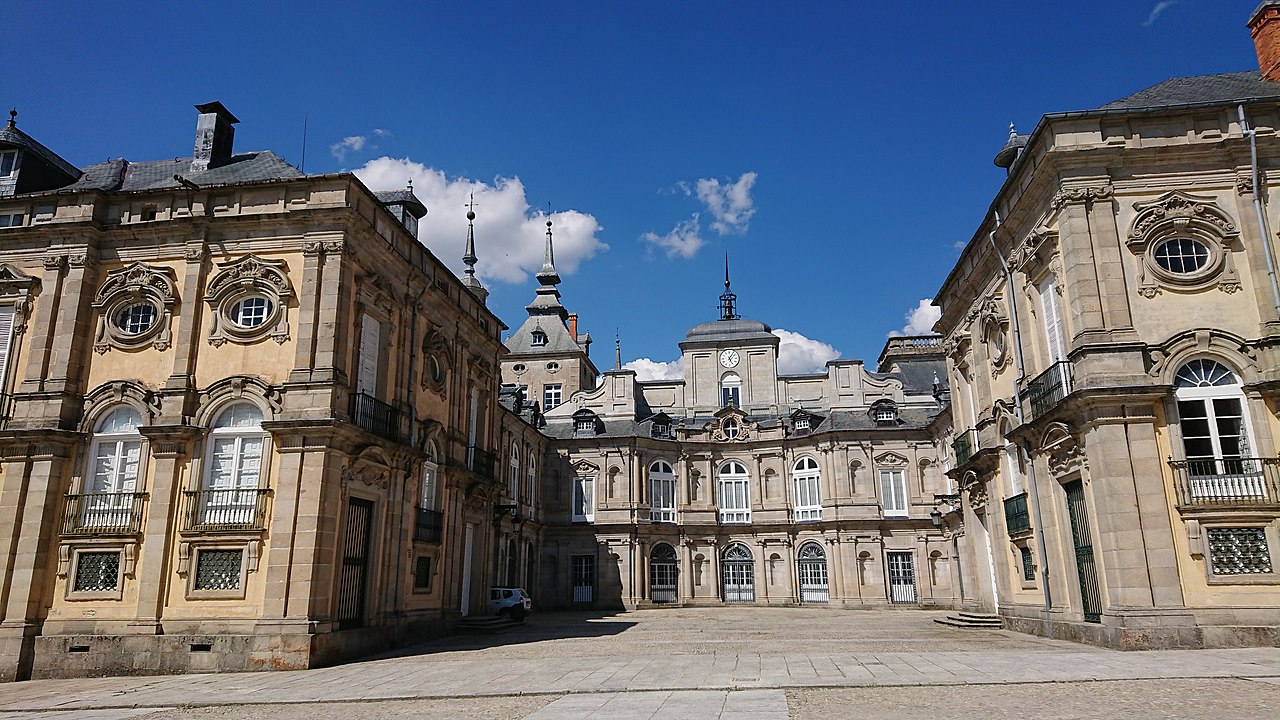
Patio de la Herradura, one of the entrances to the Royal Palace of La Granja
This marvelous construction is formed by the palace itself and a series of outbuildings that they give you U-shaped plant. From a frontal perspective the palace has two courtyards, the one of Cars and the one of the Horseshoe, which is currently the main entrance. On the other hand, as a tragic fact, we will tell you that, in 1918, the building suffered a devastating fire that caused enormous losses of frescoes, tapestries, furniture and other decorative objects.
On the other hand, as we told you, several buildings make up the palace complex. Attached to the palace is the Royal Collegiate Church of the Holy Trinity, which houses both the Chapel of the Relics such as royal cenotaph. However, neither Philip V ni Elizabeth of Farnese They were not buried in these, but in a crypt located behind the main altar.
The royal pantheon of San Ildefonso, due to the talent of the aforementioned sculptor Hubert Dumandre, was the first manifestation of neoclassical funerary art in Spain. And, later, it would be imitated in the tombs of Ferdinand VI and his wife Barbara of Braganza in Madrid convent of the Salesas Reales.
Also, perpendicular to the palace, you can see the House of the Ladies, which today houses the precious Tapestry Museum. And, on the left side of this square, is the House of Trades. Finally, the House of Flowers completes the monumental complex attached to the Royal Palace of La Granja de San Ildefonso.
However, in this Royal Site there are other buildings that do not strictly belong to the palace, but we also advise you to visit. Later, we will talk about them. However, first we want to do it from the interior and from the palatial gardens.
the palace inside

One of the halls of the palace
The interior of the palace had and has a profuse baroque decoration. There are plenty of ceilings with polychrome gold moldings, pictorial frescoes on the ceilings and impressive lamps made in the Royal Glass Factory of the Granja de San Ildefonso itself. Fortunately, despite the fire that we have mentioned, many of the original frescoes are preserved.
The part of the palace that you can visit today has two plants. In the main one are the private rooms of the kings. Among them, the Portrait Gallery, the bedroom itself, the mirror cabinet and Lacquer Hall. For its part, the ground floor presents a more lavish decoration. In fact, each of its rooms is named after the theme of the fresco that decorates its ceiling. Thus, we have the Halls of Justice and Hercules, the of the Galatea fountain and, above all, the impressive marble room or from Europe.
the palace gardens
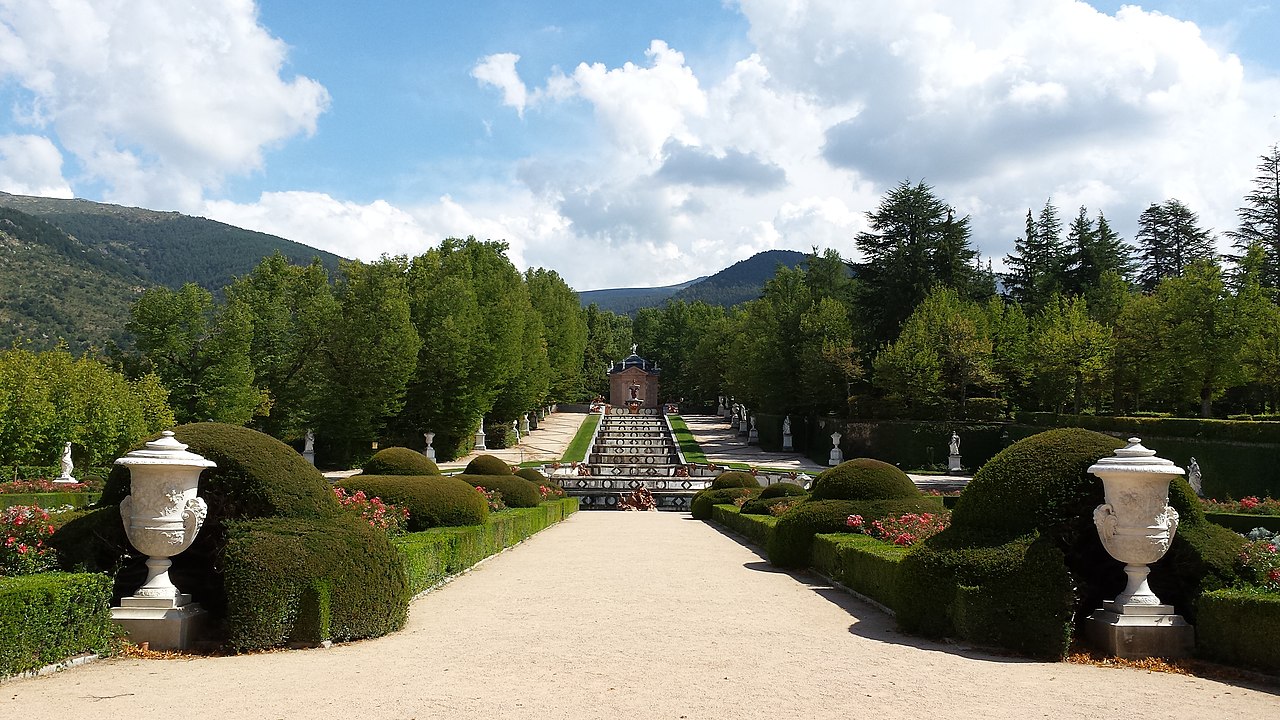
Gardens of the Royal Palace of La Granja de San Ildefonso
If the palatial building is very beautiful, its gardens are even more spectacular. They occupy an area of one hundred and forty-six hectares around the main building. Its design responds to French style, whose best exponent are those of Palace of Versailles. we can't forget that Philip V He was French, the same nationality as the main architect of the gardens: the aforementioned Rene Carlier.
But, in addition to standing out for their beauty, they do so as a work of art. Hydraulic engineer. To supply the twenty one fonts that adorn the gardens, a large deposit was created in the highest part of the estate, which was baptized, significantly, as the sea. From this, the liquid flowed to the former through underground cast-iron pipes with a length of thirteen kilometers.
If we tell you that these fountains have three hundred water spouts and that, if they all worked at the same time, they would consume nine thousand cubic meters of liquid, you will get an idea of the complexity of the work. Special relevance in terms of consumption has the fountain of the frogs, which has sixty pumps and its own deposit.
Along with it, many others stand out such as that of the Baths of Diana, that of Andromeda, that of the High and Low Dragons or that of Neptune. As their own names make you understand, these sources present themes of the classical mythology. Thus, they include deities and allegorical scenes. And, as an anecdote, we will tell you that they were made of lead to prevent corrosion. However, to make them more beautiful, he painted them imitating bronze.
Other monuments of the Royal Site of San Ildefonso
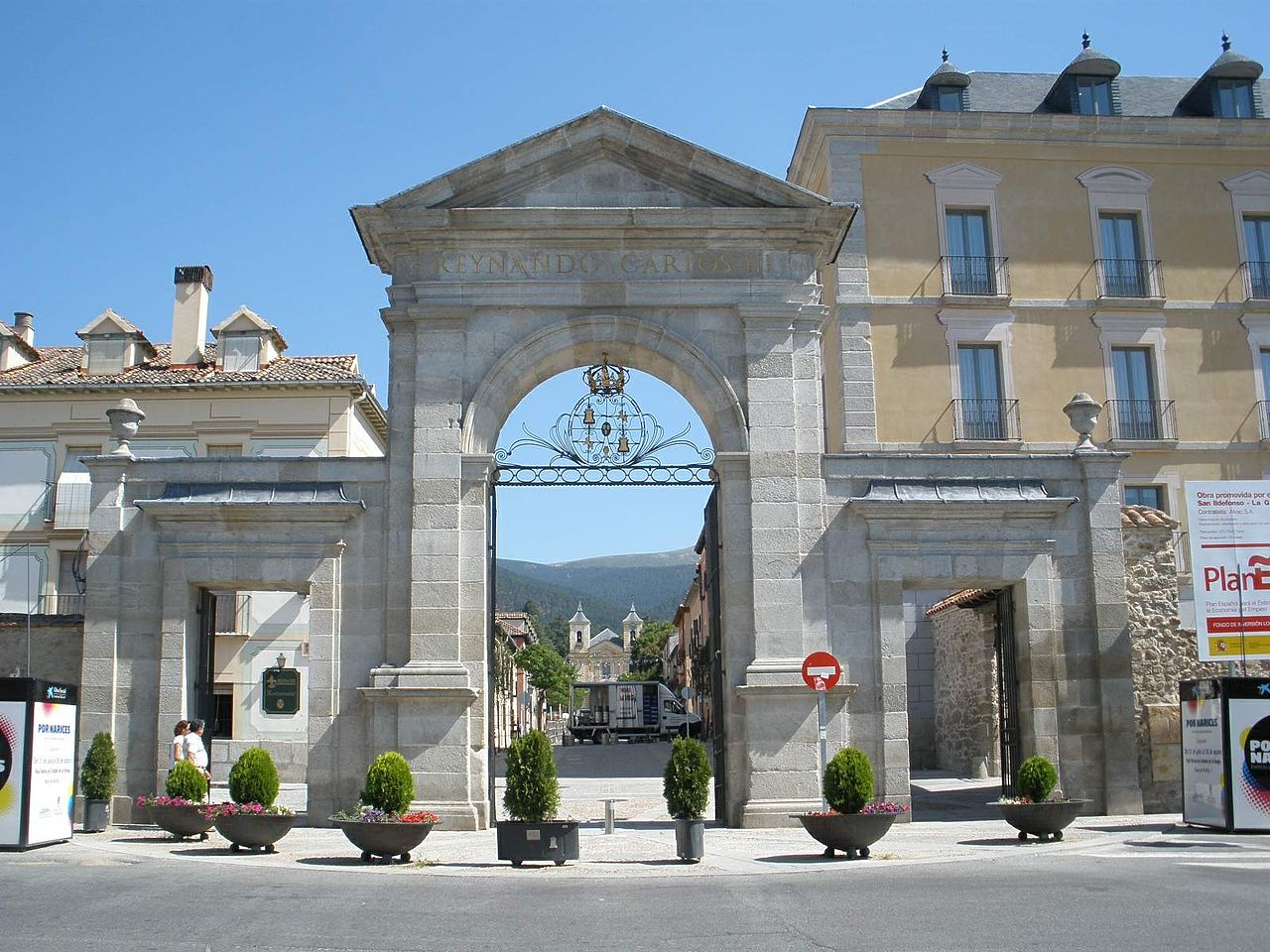
The Queen's Gate
As we mentioned before, you can visit other magnificent monuments in the Real Sitio San Ildefonso. So, the Royal Glass and Crystal Factory, which we have already mentioned in passing. It is an XNUMXth century construction that houses an interesting museum. We also recommend that you visit the neoclassical churches of Nuestra Señora del Rosario and Nuestra Señora de los Dolores, Like that of Saint Elizabeth, although the latter is neo-Gothic from the XNUMXth century.
To this same century belongs the House of Canons. For its part, Children's House It is the current tourist hostel and the Corps Guards barracks It is a congress center. Next to the hostel, also, you have the bauer house, built in the XNUMXth century, with its splendid portico and garden. From that same period are royal stables and Town hall, the latter built to function as a hospital. Finally, be sure to see one of the gates of the villa. For example, the queen's.
How and when to visit the Royal Palace of La Granja
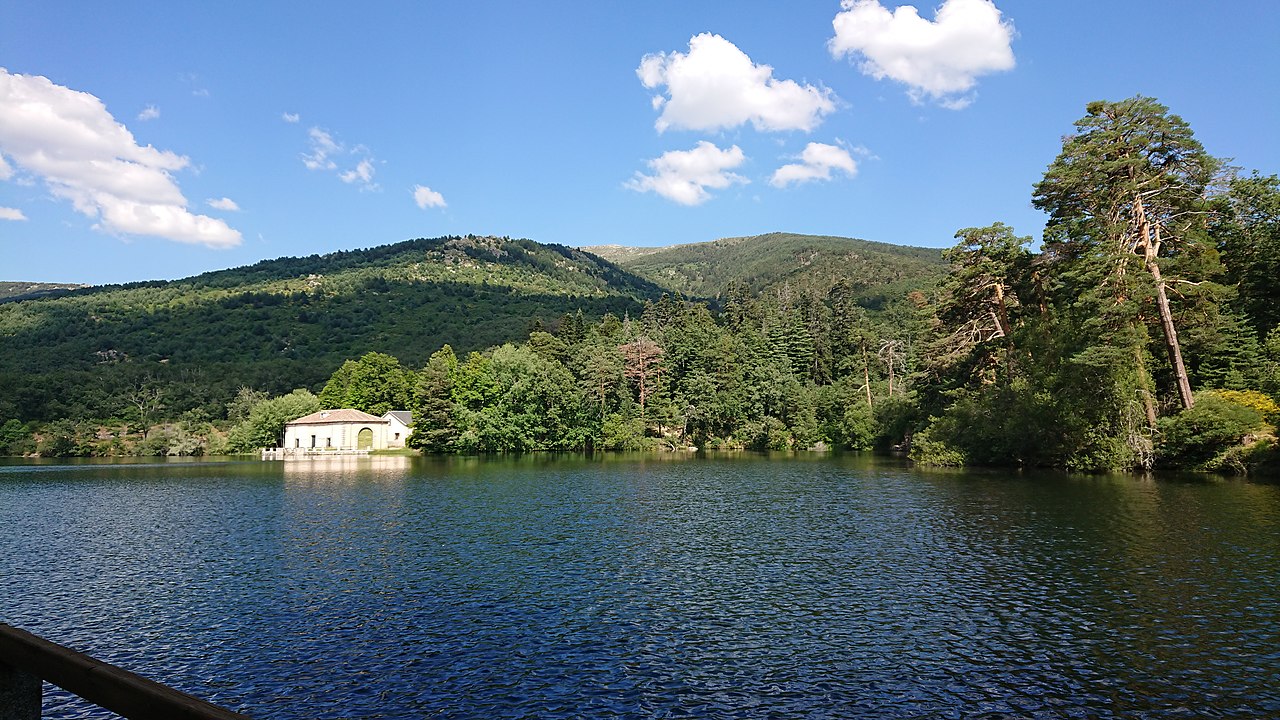
Pond of the Sea in the Granja de San Ildefonso palace
You can visit the Royal Palace of La Granja de San Ildefonso from Tuesday to Sunday between 10 a.m. and 18 p.m. However, you must enter before 17. And if you want to do it free, you will have to go on a Wednesday or Sunday between 15 and 18 pm. For its part, on Mondays it remains closed. However, the gardens have different hours. From November to February, you can access them between 10 a.m. and 18 p.m. However, in October and March, it is extended until 18.30:20 p.m. And in April, May and September until 16:30. Finally, both from June 21 to XNUMX and in the months of July and August, the hours are extended until XNUMX:XNUMX p.m.
Regarding the rates, the basic one is nine euros, although, if you contract the visit through an agency, it goes down to seven. There is also another reduced price of four euros. And, in case you want a guide to accompany you, you will have to pay four more (five, if you want an audio guide).
On the other hand, if you travel in your own car, the roads that take you to Granja de San Ildefonso from Madrid consist of the A-6, the AP-6 and the AP-61. And from Segovia, you have to take the M-601. But you also have bus lines from both cities. And you can even travel by train to Segovia to then take another transport to the Royal Site.
In conclusion, we have explained everything you need to know about the Royal Palace of La Granja de San Ildefonso. We recommend that, if you have the opportunity, you visit it because it is a marvel at its height Versailles. And, by the way, visit the no less beautiful city of Segovia, one of the most monumental of Castilla y Leon.